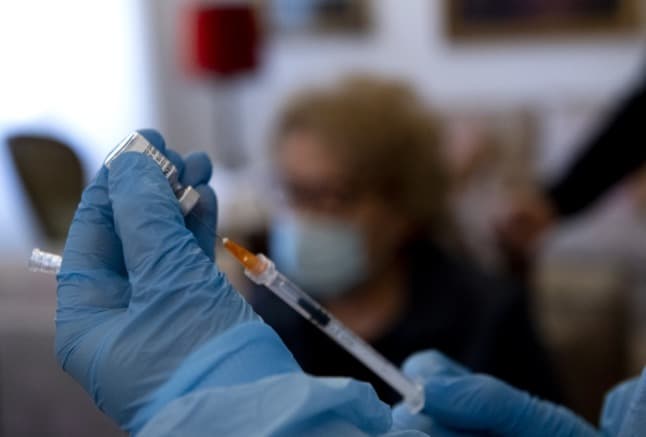CHARTS: How many people has Italy vaccinated so far?

Find the latest data on how many people have received the Covid-19 vaccine in each region of Italy.
This article was updated on June 3rd.
Nearly six months into its Covid-19 vaccination campaign, Italy has administered more than 35.8 million doses nationwide and fully immunized some 12.4 million people, according to the Health Ministry's running tally.
That means nearly 23 percent of the total population over 12 has had all the shots they need.
READ ALSO: Where to register for a Covid-19 vaccine in your region of Italy
The programme has picked up speed significantly over the past few weeks, with more than 3 million doses injected every week in May.
Here's a closer look at the latest official vaccine data from each part of Italy.
Italy began its vaccination rollout by focusing on health workers and the elderly, followed by people with medical conditions that make them especially vulnerable to Covid-19.
It has extended appointments to younger and younger adults, and starting this week has given the go-ahead for regions to open booking to everyone over the age of 12.
Some regions have already begun doing so, and several plan to start vaccinating all groups within weeks.
More than 90 percent of Italy's over-80s have had at least their first dose of a Covid-19 vaccine, according to the official figures, while over 80 percent are fully vaccinated.
Italy aims to finish vaccinating its oldest residents by the end of June. Its Covid-19 emergency commissioner has urged regional health services not to forget about those in high-risk groups who have not yet had their shots even as they begin offering vaccines to younger people, with local authorities urged to reach out to elderly residents who still haven't booked a jab.
READ ALSO: Do you need a health card to get vaccinated in Italy?
Ultimately Italy plans to offer vaccination on a walk-in basis at pop-up centres around the country.
Vaccination programmes vary by regional health authority. You can find more information about signing up for the jab here.
These charts are updated automatically with the latest available data from the Italian Health Ministry.
Comments
See Also
This article was updated on June 3rd.
Nearly six months into its Covid-19 vaccination campaign, Italy has administered more than 35.8 million doses nationwide and fully immunized some 12.4 million people, according to the Health Ministry's running tally.
That means nearly 23 percent of the total population over 12 has had all the shots they need.
READ ALSO: Where to register for a Covid-19 vaccine in your region of Italy
The programme has picked up speed significantly over the past few weeks, with more than 3 million doses injected every week in May.
Here's a closer look at the latest official vaccine data from each part of Italy.
Italy began its vaccination rollout by focusing on health workers and the elderly, followed by people with medical conditions that make them especially vulnerable to Covid-19.
It has extended appointments to younger and younger adults, and starting this week has given the go-ahead for regions to open booking to everyone over the age of 12.
Some regions have already begun doing so, and several plan to start vaccinating all groups within weeks.
More than 90 percent of Italy's over-80s have had at least their first dose of a Covid-19 vaccine, according to the official figures, while over 80 percent are fully vaccinated.
Italy aims to finish vaccinating its oldest residents by the end of June. Its Covid-19 emergency commissioner has urged regional health services not to forget about those in high-risk groups who have not yet had their shots even as they begin offering vaccines to younger people, with local authorities urged to reach out to elderly residents who still haven't booked a jab.
READ ALSO: Do you need a health card to get vaccinated in Italy?
Ultimately Italy plans to offer vaccination on a walk-in basis at pop-up centres around the country.
Vaccination programmes vary by regional health authority. You can find more information about signing up for the jab here.
These charts are updated automatically with the latest available data from the Italian Health Ministry.
Join the conversation in our comments section below. Share your own views and experience and if you have a question or suggestion for our journalists then email us at [email protected].
Please keep comments civil, constructive and on topic – and make sure to read our terms of use before getting involved.
Please log in here to leave a comment.